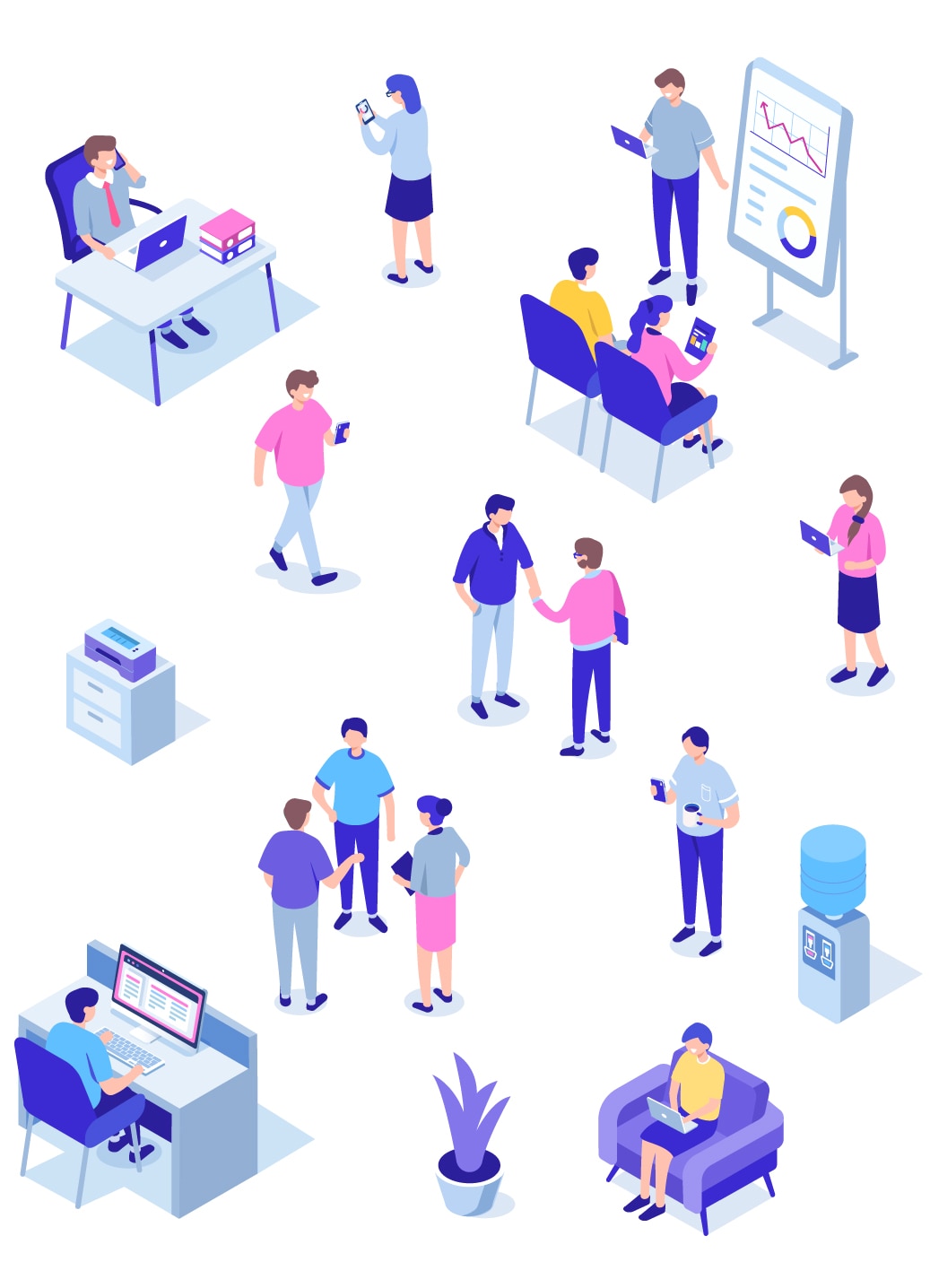Identifying effective solutions to help address our clients’ evolving needs is a key part of Citi’s role as one of the world’s leading trade finance banks.
Citi approaches this challenge by tapping into its innovation ecosystem, where its in-house innovations are complemented by a diverse range of collaborations with external partners.
Valeria Sica, Head of Trade product development in Citi’s Treasury and Trade Solutions, talks about Citi’s open and flexible approach to collaborating with innovators in working to deliver relevant, viable, and transformative technologies to support clients and help shape the future of trade finance.

Valeria Sica,
Head of Trade product development,
Treasury and Trade Solutions, Citi
Complex at the best of times due to its historical reliance on paper and the many parties involved, global trade is not typically renowned for speed when it comes to adopting new technologies. Yet in the decade or so since the financial crisis, the sector has shown remarkable agility, as well as an appetite for innovation not least with respect to the digitization of various elements of the supply chain and in the provision of trade finance. The pandemic’s testing of trade’s resilience uncovered a capacity to nimbly adapt, thanks, in large part, to advances in digitization.
For example, paper-intensive processes are now being replaced by digital and automated capabilities. New platforms using blockchain technology are allowing corporates and banks to access data and documents remotely, in real-time and more securely than by couriering them. Trading partners can communicate instantly to process trades and manage finance more quickly and effectively. Artificial intelligence (AI) and machine learning (ML) are coming into their own, helping to speed up and carry out document-heavy tasks more efficiently.
Identifying potential and driving innovation
Such advances require advocates. As one of the world’s major trade finance banks, Citi views its role as helping to drive innovation. Many ideas start at Citi’s own Innovation Lab. But just as many are proposed to the bank by a fintech company or start as a suggestion by a client. Citi’s collaborative innovation framework led to a variety of collaborations, including agreements to employ new technologies; various forms of joint venture; collaboration with one or more partners to develop a particular product or service; or Citi joining a consortium of industry players that, together, are working to address challenges facing the industry.
While neutral with respect to their origins, Citi’s role is to find, develop and deliver solutions for its clients. This involves running any potential innovation through our evaluation process putting ideas and innovations through their applicability paces. The winners must directly address a client need, be viable, have the potential to advance the bank’s overarching strategy to build the global trade bank of the future, and must also improve trade and the provision of trade finance as a whole: hence the bank’s determination to collaborate and consolidate innovation on an industry-wide basis.
Below are just some examples of Citi’s role as a partner, an investor, and as a catalyst. Many address the same issues: authenticity of trade documents and faster flows. From the numerous companies out there, we’ve carefully selected those that we want to work with: i.e. those that we think have the potential to change global trade through a community of people and technical functionality.
Trade Information Network: Pushing the boundaries to revolutionize open account trade
Some ventures, particularly those involving a step change in industry practice, are best executed by collaborating with industry partners. An excellent example is the Trade Information Network, a consortium that Citi helped found in 2018, together with five other banks1. As an inclusive global multi-bank, multi-corporate network in trade finance, it seeks to transform open account trading by digitizing it creating an inclusive and open industry-standard network that is open to both banks and corporates.
It allows corporates to communicate trade information to banks easily and securely (for instance by digitally submitting and verifying purchase orders and invoices), and to request trade financing directly. Buyers and suppliers are in control of their data, designating who can access it. Having reliable information assists banks and can help reduce errors and fraud. Having information earlier in the supply chain can help unlock earlier financing.
By deploying open architecture, standardized connectivity and governance principles modelled on SWIFT, the Network aims for maximum adoption that eases access to trade finance for a wider range of companies, including small-medium size enterprises (SMEs). The fundamental purpose is to address the persistent industry issue of the global trade finance gap estimated at US$1.5 trillion2 which affects SMEs, thereby helping such businesses, and global trade, to reach their full potential. Citi will use the network to offer additional financial support to suppliers earlier in the supply chain cycle.
1 ANZ, BNP Paribas, Deutsche Bank, HSBC and Standard Chartered
2 https://www.adb.org/publications/2019-trade-finance-gaps-jobs-survey
Komgo: Powering trade networks
When the objective is nothing less than automating the global trade network and digitizing trade and asset finance processes, an industry-based approach uniting banks and corporates appears the obvious route to take. In 2018, Citi helped found Komgo with other strategic investors from the bank and corporate community, which now includes 168 corporate and 33 bank users. Komgo supports global digital trade flows through four software solutions, each focused on a critical area of trade: KYC, tracking trade documents and verifying their authenticity, harmonizing and verifying receivable data, and managing issuance and amendments of trade finance instruments. Komgo offers an interoperable and secure data exchange and trusted trade network. It has recently launched its “Digital Agent” collateral tracking suite for collateralized revolvers and has the functionality to support electronic bills of lading (BLs) once the trade community is ready.
Allowing verified participants secure communication through structured authenticated messages and using open APIs to interface with other third-party systems, Komgo digitizes workflows and transactions throughout the lifecycle of many key trade finance instruments. This can strengthen trust between members of the trade community. Komgo’s products and strategy to build a global digital network of bank and corporate participants were key reasons Citi got involved.
Trusple: Blockchain platform for international trade targeting SMEs and banks
In 2020, Citi partnered with BNP Paribas, DBS Bank, Deutsche Bank, Standard Chartered and Ant Group (the company operating Alipay, the largest mobile payment platform in China), to launch Trusple, a blockchain platform for international trade transactions that targets SMEs and banks.
SME buyers and sellers without established relationships can often face delays in shipments and payment settlements, which may place pressure on their finances and cashflow. Trusple tackles this challenge as well as helping banks support global trading by SMEs by leveraging smart contracts powered by AntChain to automate the trade transaction. The platform uses “smart” contracts to automatically update information on a trade on the platform, including progress on delivery. It also aims to integrate bank-offered trade finance including automated bank payments using smart contracts.
Contour: Digitizing letters of credit
While Citi was a co-founder of the above ventures, it may also be equally happy to join a pre-existing consortium, provided the idea helps benefit its clients and advances trade finance. An example of this is Contour, a blockchain-based trade finance network that Citi joined in 2020.
Using enterprise software firm R3’s Corda blockchain platform, Contour’s aim is to digitize the traditionally paper-heavy letter of credit (LC) process. It succeeded in reducing the average time it takes to execute from five to ten days (for paper LCs) to under 24 hours in most cases. Having all necessary documents available digitally and in real-time on a trusted digital platform allows banks and trading partners to reconcile their documents more quickly while helping to enhance document security. This represents a huge leap in terms of efficiency for what some consider traditionally cumbersome LCs as well as demonstrating that even the most paper-heavy parts of trade finance can enter the digital age.
TradeLens eBL: Automated bills of lading on a blockchain-enabled digital shipping platform
Citi is also collaborating with TradeLens, a multifunctional blockchain-based shipping platform. A key offering of the platform is the TradeLens eBL: a standard, industry-supported, end-to-end digital solution that provides shippers, cargo owners, freight-forwarders, banks, and carriers with a streamlined and secure process for the issuance, transfer and surrender of original bills of lading.
The TradeLens platform jointly developed by IBM and A.P. Moller-Maersk is helping to increase efficiency and transparency for the large numbers of parties commonly involved in supply chains. Connecting more than 400 organisations across the globe, including global shipping lines MSC, CMA-CGM, customs authorities from over a dozen countries, and gathering data from an additional 600 ports and terminals worldwide: TradeLens provides participants with a single, shared source of shipping data and with trade documentation verified by blockchain technology, helping to ensure a secure record of all transactions. All permissioned parties can follow cargo movements around the world in near-real-time, digitize their documentation and facilitate cross-organizational collaboration and workflows.
Citi is also currently piloting the platform’s digital verification, assignment and endorsement of automated bills of lading (eBLs) for LC transactions, which may lead to significant cost reductions.
TradeAssets: e-marketplace for trade finance assets
Another pre-existing consortium Citi joined is TradeAssets, an institutional trade finance e-marketplace also powered by blockchain and operated by Fintech Innovations International in Dubai.
TradeAssets is implementing a step change in the digitization of the marketplace among banks for trade finance assets. It offers banks an online, 24/7 real-time portal for the origination and distribution of trade finance assets, covering LC confirmations, LC discounting, standby LCs, bid and performance bonds and guarantees.
Allowing banks to communicate on and trade in such documents more efficiently can help address financial exclusion in emerging markets, thus helping to combat the trade finance gap. Membership stands at 67 financial institutions across 20 countries, with many more anticipated to join across Europe, the Americas and Africa in the near future.
HighRadius: AI-powered order-to-cash and treasury management software leader
Another example of a strategic investment in AI is Citi Ventures’ partnership with HighRadius, a software company specializing in cloud-based integrated receivables, to develop and launch Citi® Smart Match. Applying HighRadius’ proprietary AI and ML technology, alongside Citi’s own proprietary assets, Citi® Smart Match automates the cash application to the accounts receivable process, matching open invoices to payments received.
This traditionally manually intensive process can suffer delays due to difficulties in obtaining remittance information or be hindered by inconsistent payer behaviour and payment mechanisms. Applying AI enabled business logic to match payments received with expected receipts, enhancing straight-through-reconciliation rates while helping to reduce costs and days sales outstanding. This in turn helps to optimize working capital for clients.
Cashforce: Real-time analytics for cash forecasting and working capital
One of the core challenges faced by large corporates in driving working capital management initiatives is timely data visibility across a complex ERP infrastructure. Citi has invested in and established a strategic partnership with Cashforce to help clients address this challenge.
The fintech has developed the ability to extract disparate business data across a large company’s enterprise infrastructure, normalize that data, and deliver analytics to help support agile decision making. Cashforce’s analytics tools are being deployed by Citi clients to join up initiatives between their treasury, finance and core business. The tools are being used to help improve treasury cash forecasting and provide finance and business stakeholders with real-time analytics to assist in making working capital management decisions. The technology is also helping clients assess credit risk dynamics across their distribution and supply chain, identify foreign exchange exposures, and more accurately plan future liquidity needs.
Citi is collaborating with Cashforce to help the bank’s clients deploy these advanced data and analytics tools as well as support their journey towards more efficient and resilient supply chains.
Using artificial intelligence for compliance and transaction monitoring
Over recent years, Citi’s digitization of trade data has helped the bank develop new ways to address compliance, standardize global control processes and make compliance processes more efficient by focusing resources on the areas of highest risk. To achieve this, Citi partnered with several organizations.
With EY and SAS, Citi deployed compliance system covering boycott language detection and sanction screening. Further, the team is working to develop a platform for trade-based money laundering (TBML) and fraud controls that uses an advanced risk analytics scoring engine. The engine harnesses machine learning to detect potentially higher-risk transactions through analyzing historical behaviour and current transaction data points in real time.
To address the emerging risks of abnormal vessel behaviour, Citi’s Innovation Lab is developing a solution that uses an API to receive Lloyd’s List Intelligence’s vessel data to create a real-time vessel evaluation platform. The platform uses self-learning AI to determine if a vessel is potentially engaging in elusive or unusual movements.
Lastly, Citi partnered with a vendor on a real-time AI tool that, once deployed, will screen and evaluate the goods in a trade transaction for the potential inclusion of military or dual-use goods.

Home grown innovation
Citi’s in-house program of projects are equally varied in complexity and range, from providing trade clients with access to digital trade documents and data, to solving more narrowly focused technical problems.
For example, Citi’s secure online global platform CitiDirect® underpins all of its other services to trade clients, in addition to cash management services offering fast, easy access to critical real-time information, the ability to initiate transactions in minutes and digitally-manage instructions for trade instruments including guarantees, LCs, trade loans, export collections and supply chain finance transactions for receivables and payables finance: all on a secure, user-friendly web-based platform. Mobile functionality additionally allows clients to manage their trade finance with ease.
An example of a more narrowly focused innovation that brings benefits is Citi’s own unique optical character recognition (OCR) technology that uses bespoke software to digitize traditional paper-based trade processing. The application identifies and classifies trade documents and extracts key data.
Finally, Citi works closely with SWIFT using MT798 FileAct or the “Trade Envelope”. This provides corporates and banks with a single, standardized and secure channel through which to exchange trade data via structured authenticated messages on the SWIFT platform.
Welcoming the trade finance market of the future
These are just some examples showing that innovation and collaboration are in Citi’s DNA. Citi’s aim is to be the catalyst for change, embracing new ideas, technologies, and solutions. If that means collaborating, we welcome it. If that requires investment, we are committed to doing so. If internal development is needed, we’ll bring our resources and talent to help meet the challenge: all with the goal of benefitting clients and helping to secure the long-term future of trade finance.
